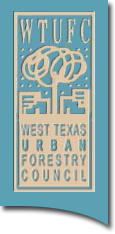Proper Pruning – Help Save Our Shade!!!
The term pruning has almost become synonymous with topping (especially with mulberries). It shouldn’t be that way. Most people follow by example and there are a lot of BAD examples that are being used as the norm.
Pruning is an art. When you finish pruning your tree, the beauty of its natural shape should still be intact. Don’t prune just to prune or because it’s “that time of year.” If pruned properly, mature trees should be on a 5-7 year pruning cycle. Young or newly planted trees should be placed on a yearly pruning schedule for the first 5-7 years to correct potential problems. Follow the guidelines in our pruning section and become a Topper Stopper.
Reasons to Prune
THINK ABOUT SAFTEY FIRST!
- Safety, removal of dead wood or weak branches.
- Health, to remove diseased or insect infested limbs.
- Structure, to improve or correct structural defects.
- Repair damage caused by storms.
- Training young trees.
- Promote flower and fruit.
"I have to top my tree, it’s too big, the wind will blow it over."
STOP! DON’T TOP!
Trees will only get as big as they are genetically capable.
Topping hurts your trees by:
- Removing the food source for the tree. Each and every leaf on your tree is a tiny food factory.
- Causing the tree to call upon stored food reserves to replace the limbs, twigs and buds that were removed.
- Growing new, weakly attached branches that are more likely to break during a storm.
- Leaving numerous and large wounds that lead to rot and decay.
- Shortening the normal life span of the tree.
Topping, heading, hat-racking, de-horning or what every you want to call it is NOT recognized by any of the professional arboricultural organizations, urban forestry professionals, or certified arborist as an approved method of pruning.
When to Prune
- Most shade trees are pruned when they are dormant, after leaf drop or early spring before bud break.
- Light pruning, removal of small or a few limbs, can be done anytime of the year.
- Spring flowering trees, like redbuds, should be pruned after flowering, because the flower buds formed on the previous year wood.
- Summer bloomers like crape myrtle bloom on new wood and should be pruned before bud break.
- Heavy pruning in late spring to mid-summer may cause stress and stunt growth.
The Right Tool for the Right Job
- ALWAYS KEEP YOUR TOOLS SHARP!!!
- Hand pruners are for cutting small branches usually less than ½ inch diameter.
- Hand lopers are for medium-sized branches ranging from ½ up to 2 inches in diameter, depending on your tool rating.
- Pruning saws are for limbs up to 4 inches in diameter.
- Bow saws or small chain saws are for branches greater than 4 inches.
- Pole saws are specialty tools for reaching branches out of arms length.
- It is good practice to disinfect your cutting blade before pruning and before moving onto a new tree. Use a 10% bleach/water solution, rubbing alcohol, or aerosol spray disinfectant.
Make Proper Pruning Cuts
Removing limbs 1 inch in diameter or larger requires a 3 step process which will prevent the ripping and tearing of bark.

Step 1: Begin with an undercut. Start cutting on the underside of the limb about 1-2 feet away from the main trunk, cut up about 1/3 of the way through the branch.

Step 2: On the topside of the branch, move away from the undercut about 1-2 inches in the direction of the branch tip, cut all the way through the branch at this time.

Step 3: The final cut is made just outside the branch collar. Remember to support the stub.

HARDWOOD BRANCH COLLAR

CONIFER BRANCH COLLAR
Making the proper cut is very important in order to encourage proper wound closure.
Identify the Branch Collar: it can usually be identified by the swollen tissue where the branch attaches to the main stem or trunk.


© 2010 - 2017 West Texas Urban Forestry Council
